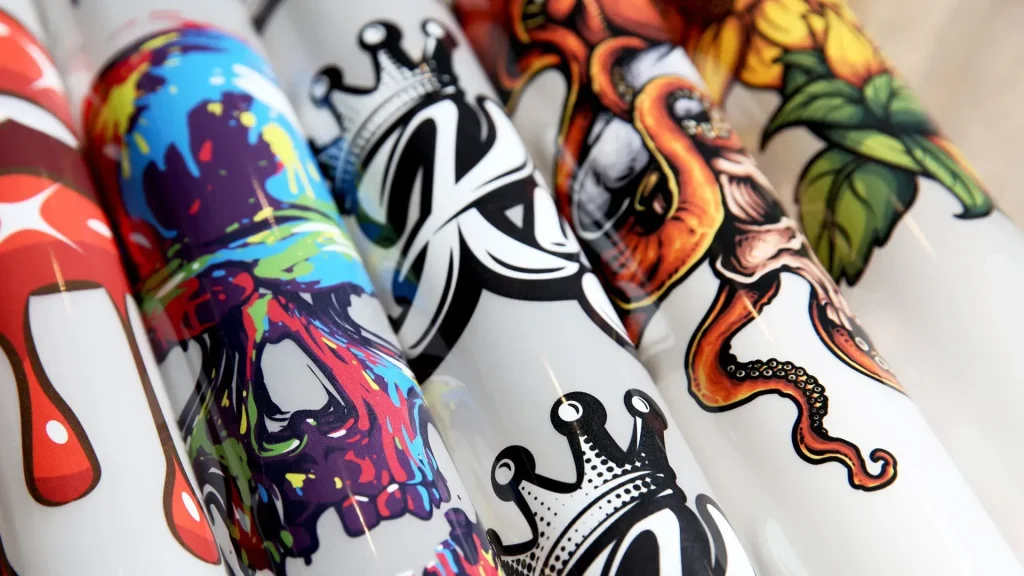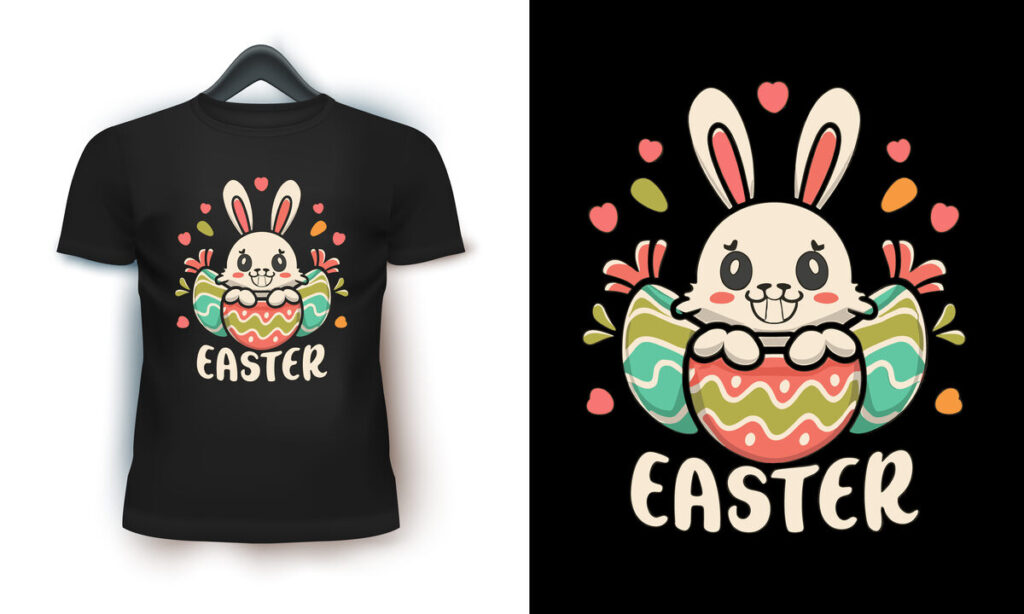DTF transfers, or Direct-to-Film transfers, have emerged as a revolutionary method in the fabric printing industry, captivating enthusiasts and professionals alike. By seamlessly combining vibrant design capabilities with ease of use, DTF printing offers a remarkable alternative to traditional techniques such as screen printing and direct-to-garment methods. This DTF printing guide will help you navigate the process step-by-step, ensuring you have all the information needed to create stunning apparel quickly and efficiently. From exploring how to use DTF transfers to understanding the myriad benefits they offer, this guide is tailored for beginners eager to make their mark in the world of fabric design. Prepare to unlock your creativity with DTF transfers and discover how this innovative technique can elevate your printing game.
Direct-to-Film transfer printing, often abbreviated as DTF printing, is quickly gaining traction as a go-to option for custom fabric designs. This method allows users to print detailed graphics onto a film which can be applied to various textiles, lending itself well to both personal and commercial applications. Understanding the process of creating transfers effectively opens up new avenues for creativity and customization. As this printing technique continues to evolve, numerous tutorials and guides are available to assist newcomers in mastering DTF transfers. In exploring this modern approach to textile printing, you’ll find that the versatility and quality of DTF offers significant advantages over more conventional methods.
Understanding DTF Transfers
Direct-to-Film (DTF) transfers represent a breakthrough in the realm of fabric printing, combining cutting-edge technology with user-friendly applications. Unlike traditional printing methods such as screen printing, which often require complicated setups, DTF printing makes the process accessible to artists, designers, and hobbyists alike. By printing designs directly onto a special PET film, users can finally embrace vibrant colors and intricate designs without the heavy investment associated with traditional methodologies. This groundbreaking approach not only streamlines production but also opens up new avenues for creativity and personalization.
One of the standout features of DTF transfers is their compatibility with a variety of fabrics. Whether you are working with cotton, polyester, or blends, DTF printing guarantees a stunning finish that adheres firmly and withstands the test of time. This versatility has made DTF a preferred option for custom apparel, especially in small batches, where the need for quality and cost-effectiveness is paramount. Thus, DTF transfers enable users to craft unique, high-quality products without compromising on design integrity.
The DTF Printing Process Simplified
The DTF printing process consists of several easily digestible steps, making it approachable for both newbies and seasoned professionals. Initially, you begin by printing your desired image onto a specialized transfer film using high-quality DTF inks. Following this, an adhesive powder is applied to the wet ink, activating once cured. This crucial step ensures that the vibrant design can be permanently transferred to fabric, resulting in vivid imagery that captivates attention.
After preparing the film with the printed design and adhesive, the actual heat transfer begins. A heat press machine is essential in this step; it applies the necessary heat and pressure to adhere the design to the fabric effectively. The outcome is a durable and dynamic print that won’t fade with washing or wear, which is a significant advantage for any clothing line or fabric arts project. The clarity and detail achievable with DTF printing are remarkable, making it an ideal choice for those who value quality in their fabric applications.
Exploring the Benefits of DTF Printing
Choosing DTF printing comes with a multitude of benefits that position it as a top-tier option for fabric decoration. Firstly, versatility stands out as one of the biggest advantages. DTF transfers can be applied to a broad spectrum of fabrics, including natural fibers like cotton and synthetic materials such as polyester. This means that whether you’re designing vibrant t-shirts, stylish bags, or custom uniforms, DTF printing can meet diverse fabric needs seamlessly.
Additionally, DTF printing excels in delivering spectacular color reproduction. The unique process ensures that colors remain vivid and designs retain their intricacy, even after repeated wash cycles. Many users find these durable prints to be far superior compared to conventional methods, which may experience fading or cracking over time. Furthermore, DTF is economically advantageous for small batches since it eliminates the need for expensive screen setups, making it an attractive option for anyone looking to create unique fabric designs.
Equipment Essentials for Starting DTF Printing
When embarking on your DTF printing journey, having the right equipment is a game-changer. Typically, this involves investing in a modified inkjet printer capable of producing the high-definition images necessary for quality transfers. You’ll also need a reliable heat press, which is indispensable for achieving a consistent transfer of designs onto fabric. These pieces of equipment form the backbone of your DTF printing setup, facilitating an efficient printing process that yields excellent results.
In addition to printers and heat presses, procuring high-quality DTF film is crucial. This specialized film acts as the medium through which your designs travel from an image on a computer screen to a tangible fabric print. Many suppliers offer beginner starter kits that comprise printers, heat presses, films, and inks, ensuring you have all necessary tools at your disposal to kickstart your creative projects. Investing in the right equipment can significantly enhance the quality and efficiency of your DTF printing endeavors.
Tips and Tricks for Beginners Using DTF Transfers
Navigating the initial stages of DTF printing may feel overwhelming for newcomers, but there are invaluable tips and resources to ease the transition. One of the most effective ways to learn is by watching online tutorials that cover each step of the DTF process. Websites and platforms like YouTube abound with instructional videos demonstrating everything from printing to heat transfer techniques, helping beginners visualize and grasp the operational nuances of DTF.
Moreover, engaging with the DTF printing community can provide additional support and knowledge sharing. Joining online forums, social media groups, or local workshops enables new users to ask questions, share experiences, and troubleshoot common issues with seasoned professionals. Building these connections can demystify challenges faced during the learning process and empower beginners with the comprehensive guidance they need to master DTF printing effectively.
Future Trends in DTF Printing Technology
The landscape of DTF printing technology continues to evolve rapidly, signaling promising advancements on the horizon. As of 2025, emerging trends point toward enhanced print quality and production efficiency, driven by ongoing research and development in printing technologies. Innovations look to minimize print times and reduce costs further, making DTF an even more attractive option for businesses and hobbyists alike.
Additionally, the growing presence of workshops and online courses dedicated to DTF printing reflects a shift in the educational landscape, offering creatives more accessible learning opportunities. These platforms will likely foster a community focused on collaboration and shared knowledge, where enthusiasts can inspire one another while mastering the art of DTF printing. As such, the future of DTF transfers is not only bright but may also yield a deeper connection among creators who wish to push the boundaries of fabric design.
Frequently Asked Questions
What are DTF transfers and how do they work?
DTF transfers, or Direct-to-Film transfers, are a fabric printing method where designs are printed onto a special PET film using DTF inks. The film is then coated with an adhesive and cured before being transferred onto fabrics using a heat press. This process produces vibrant and durable prints that are versatile enough for various fabric types.
What are the benefits of using DTF transfers over traditional printing methods?
The benefits of DTF transfers include greater versatility in fabric usage, allowing for application on cotton, polyester, and blends. Additionally, DTF printing produces vivid colors and detailed designs with high durability, making it ideal for custom orders and small batches without the expense of traditional screen printing setups.
What equipment do I need to get started with DTF printing?
To start DTF printing, you’ll need a modified inkjet printer for producing transfers, a heat press machine for transferring designs onto fabric, and special DTF film paper. Starter kits with these essential tools are available from various suppliers to help beginners.
How can I learn how to use DTF transfers effectively?
Learning how to use DTF transfers effectively can be achieved through various resources such as online tutorials, YouTube videos, and blogs that provide step-by-step guides. Engaging with the online crafting community through forums and social media can also offer valuable insights and troubleshooting advice.
Are there any specific challenges I should expect when starting with DTF transfers?
Beginners may face challenges such as adjusting print settings, applying adhesive correctly, and handling the transfer film. However, these issues can typically be resolved through tutorials and resources available online, which provide guidance for overcoming common initial hurdles.
What recent trends are emerging in the field of DTF printing?
Recent trends in DTF printing include advancements in print quality and production efficiency, as well as a growing number of online courses and workshops dedicated to this technique. The DTF printing community is becoming increasingly active, encouraging the sharing of insights among creators.
| Key Point | Explanation |
|---|---|
| What is DTF Transfer? | An innovative printing process that uses a special PET film to transfer designs onto fabrics. |
| How DTF Works | The process involves printing on film, applying adhesive, and heat transferring onto fabric. |
| Benefits of DTF Transfers | Advantages include versatility, vivid colors, and cost-effectiveness for small batches. |
| Equipment Needed | Essential items include a DTF printer, a heat press, and DTF film paper. |
| Learning Curve | Beginners may face challenges, but online resources like tutorials and community support can help. |
| Recent Trends | DTF technology continues to evolve, improving print quality and efficiency, with workshops emerging. |
| Resources for Learning | Resources include blogs, online courses, and community engagement through social media. |
Summary
DTF transfers are revolutionizing the fabric printing landscape by offering an accessible and efficient method to achieve vibrant and durable designs. This technique is incredibly versatile, allowing for use on a variety of fabric types while maintaining high quality. As more individuals and businesses explore DTF transfers, it’s clear that this method not only enhances artistic expression but also provides a cost-effective solution for custom printing needs. With a plethora of resources available, both online and through community support, anyone can tap into the potential of DTF transfers and bring their creative visions to life.



